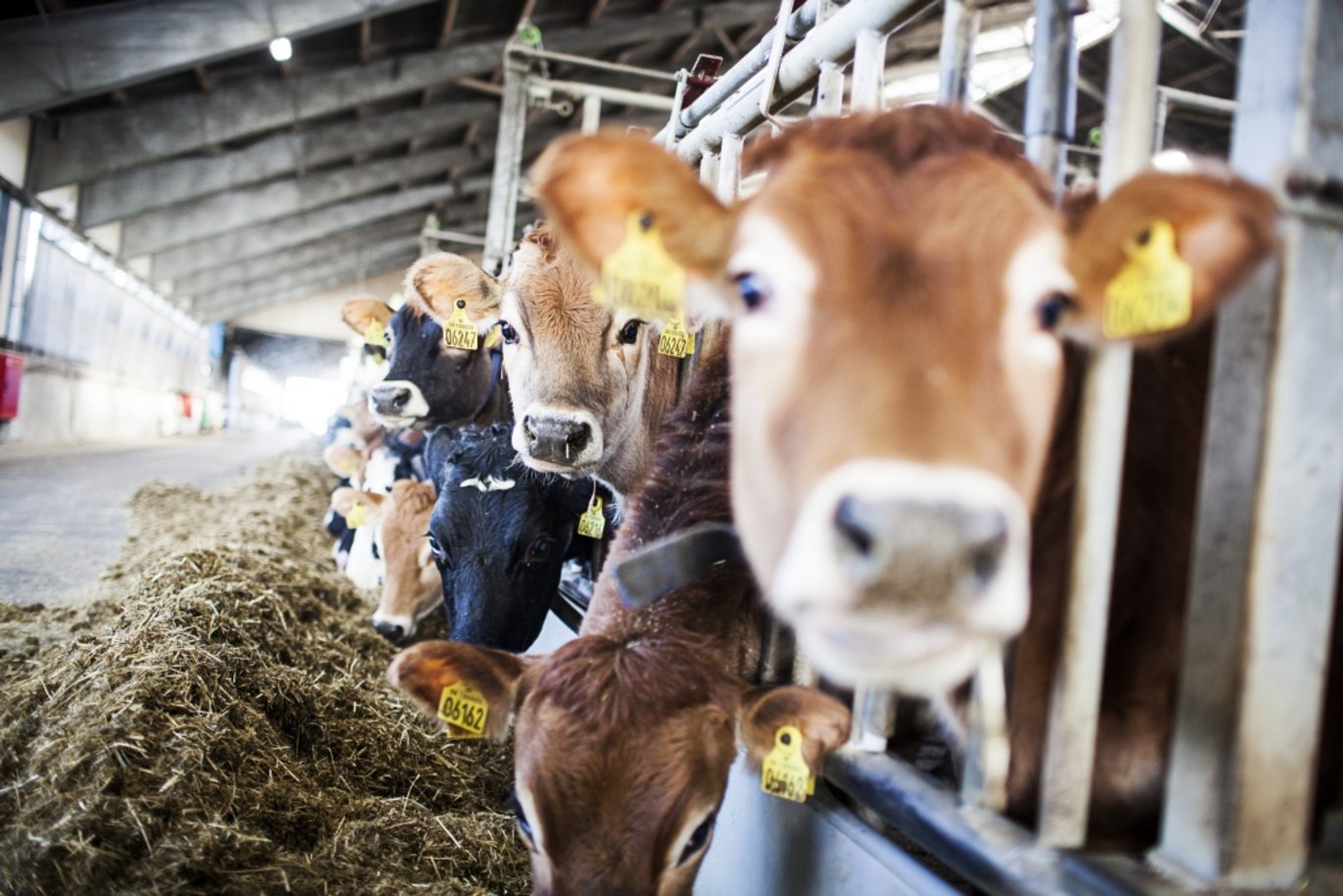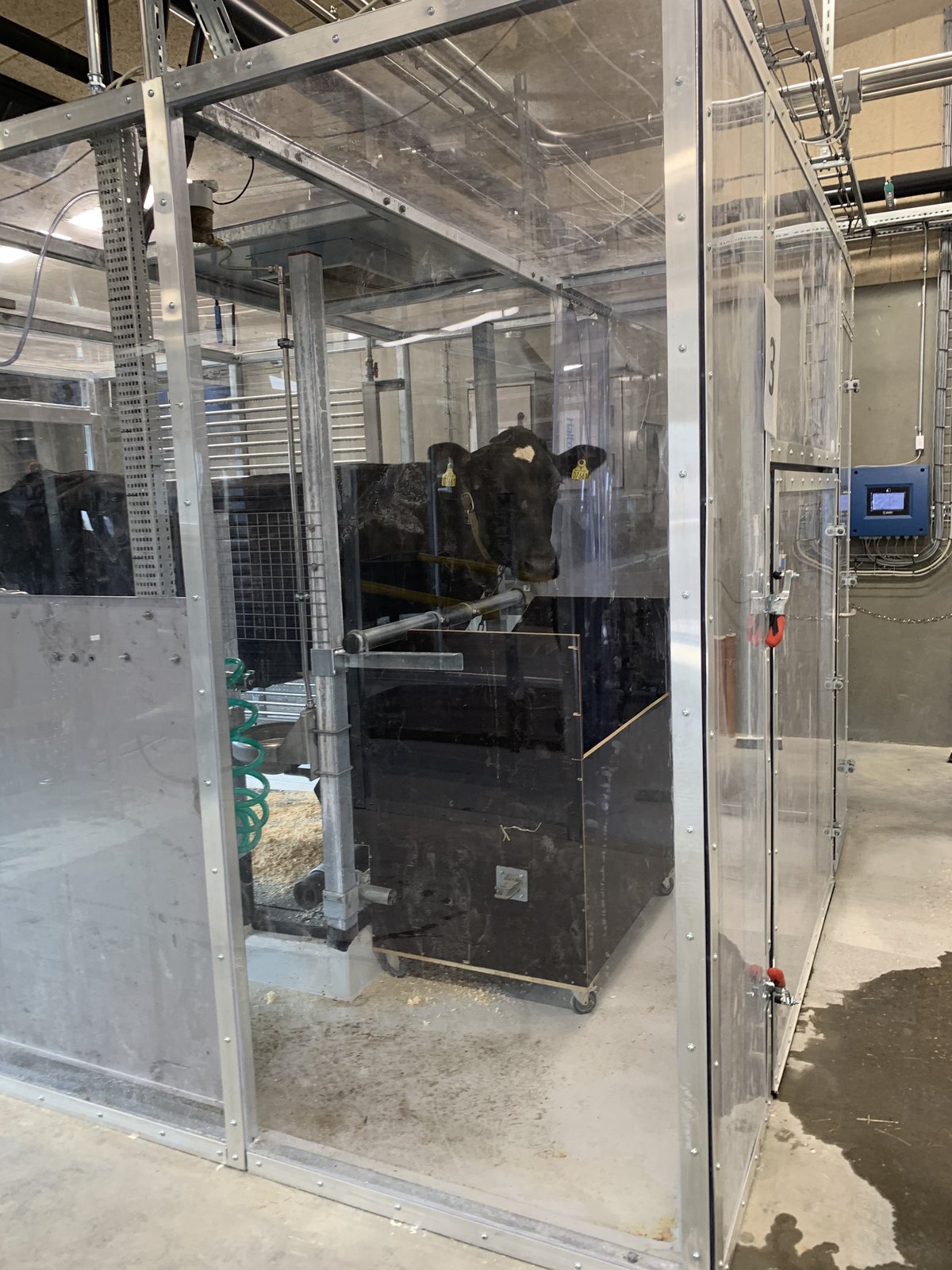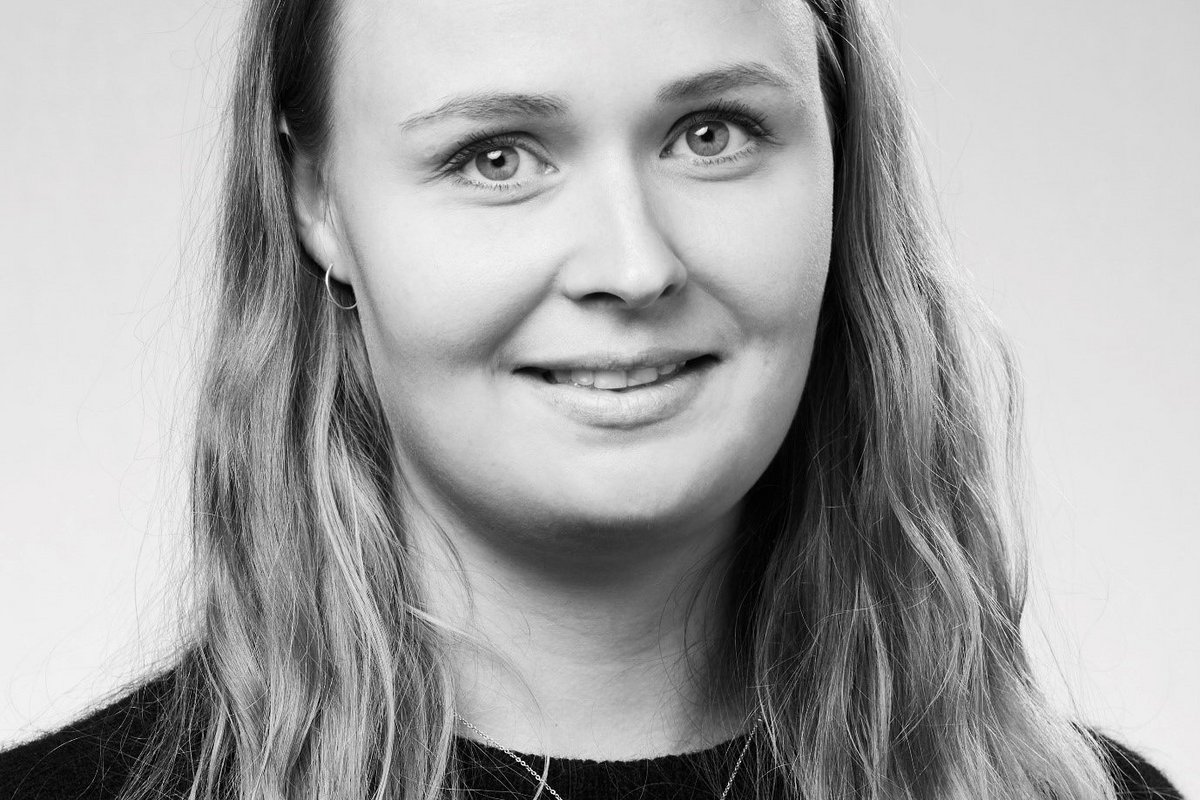Algae in feed troughs make cows belch less methane
If cows belch less, they emit less methane. Methane is one of the worst greenhouse gases.

Some very special cows are walking around the stables in AU Viborg - Aarhus University's deparment just outside of Viborg in Denmark. The cows have been implanted with a so-called fistula. This is a kind of window leading directly into the stomach of the cow.
Through a tube, researchers can take samples and observe what is happening in the cows’ stomachs when the cows eat different types of feed. The feed can have a huge impact on how much cows belch, and thus on how climate-friendly they are.
Experiments in the US and Australia have shown that adding the tropical algae Asparagopsis to feed means cows emit 80 per cent less methane. The problem is that Asparagopsis contains the substance bromoform, which can potentially cause cancer in humans and also harm the ozone layer.
Therefore, the hunt is on for other species of algae with the same effect, but without bromoform. This is what Mirka Mølgaard Thorsteinsson studied in her PhD, which she has just submitted at the Department of Animal and Veterinary Sciences at Aarhus University.
"I’ve researched into the effect of a large number of algae that grow here in the Nordic region. I hope that they can help reduce the methane emitted by the cows and, at the same time, perhaps replace the soy we import from South America," she says.
| Mirka Mølgaard Thorsteinsson |
|---|
In September, Mirka will defend her PhD dissertation at the Department of Animal and Veterinary Sciences. She has submitted the dissertation – and she has already started new experiments in her new role as a postdoc. She loves working with the cows. The cows usually only have numbers, but she has given them all names. Every day she checks the cows, pets them, and makes sure that they are having a good day. Happy cows give better results. She also thinks that the cows should be happy. And according to Mirka, no cows in Denmark are cared for better than those at AU Viborg. |
The artificial cow stomach
Before Mirka went to the university cowsheds to feed the special cows with algae, she tested the various algae species in an artificial cow stomach. This is a small apparatus for investigating whether the algae have reduced methane emissions, she explains.
“An artificial cow stomach is actually just a small bottle that I’ve filled with stomach fluid from a cow. Then I added the type of algae I want to examine and a little buffer to act as the cow's saliva,” she says.
The fermentation process starts in the rumen fluid when microorganisms start to break down the algae. The special cocktail of bacteria, protozoa and fungi in the cow's stomach means that the cow can break down the fibres (cellulose) in grass and algae, for example, and extract the nutrition. Humans and most other animals cannot break down the tough plant fibres.
When the microorganisms degrade the cellulose, a chemical reaction takes place and releases CO2, methane and other by-products. To measure the amount of methane and CO2 emitted, Mirka put a bag on the bottle to capture the gas.
“It's a cheap and quick way of investigating the effects of the algae. Once the gas has been collected, I use gas chromatography to see how much of the different types of gases are in the bag. In this way, I know whether the algae have reduced the methane emissions in relation to grass feed, for example,” she says.
Found no effect in real cows
The experiments in the artificial cow stomach showed that a number of Nordic algae seemed to have an effect. Therefore, Mirka took the algae with the greatest effect and added them to the real cows' feed.
“I gave the algae to four cows. They all had fistulas fitted. It is a kind of tube that we can open, stick our hands through and take samples directly from the rumen or the intestine. I took regular samples of the contents of the stomach. Furthermore, the cows were in respiratory chambers in which the amount of methane the cow belches up could be measured.
“Unfortunately, the algae did not seem to have any effect on the belching. The cows didn’t emit less methane. However, one of the algae species reduced some protein digestibility, but we aren’t interested in that because it means that the cow gets less nutrition out of the feed,” she says.
Mirka does not know exactly why the experiment worked in the artificial cow stomach, but not in the real cows. But the environment inside the cow stomach is far more complex than we can simulate in a bottle. There can therefore be many different reasons for why it did not work, she explains.

The hunt for the perfect feed
Even though none of the algae had the desired effect in the cows, Mirka has not given up hope. She is still looking for the right feed – and she hopes to find an effect in an algae that grows at Danish latitudes.
"What I'm looking for is feed containing molecules that settle on the methanogens in the cow's stomach and inhibit their activity. Bromoform is an example of such a molecule. Unfortunately, it is potentially harmful to human health. That's why we're looking for another molecule with the same effect,” she says.
Bromoform and other molecules that reduce methane emissions from cows do not just turn down the gas valve. Several experiments at AU Viborg have shown that cows do not digest their feed as well if there are methane-inhibiting additives in their feed. This can lead to the cows producing less milk.
"However, experiments in the Netherlands have shown that it is possible to reduce the activity of the methanogens without the cow digesting less energy. I'm looking for a feed that can do just that,” she says.
| Why we're looking for better feed for cows |
|---|
Denmark alone imports 1.6 million tonnes of soy every year. Most of this soy is used in agriculture as feed for pigs, cows and chickens. Soy is an extremely efficient feed. Soybean meal contains a lot of protein and has a unique composition of amino acids allowing for a high percentage absorption of the feed during animal digestion. The only problem is that the high level of imports of soy harm the climate. Brazil is felling rainforest to make space for ever more soy fields, and the long transport distance to Denmark emits large amounts of CO2. Not only that, the soy also makes cows belch more methane. In other words, soy is bad for the climate. If Mirka or other researchers can find an alternative that is just as efficient, they will make a big difference in the climate accounts. |
The hunt continues in Nordic seaweed
Even though Mirka's experiment did not show the effect she had hoped for, she has not given up her hunt. We have a lot of seaweed in Denmark with its many kilometres of coastline – and today we hardly use seaweed at all as a resource.
Mirka is looking for bioactive substances in seaweed. These are molecules that resemble bromoform in the sense that they inhibit the formation of methane in a cow's stomach. But without the potentially harmful effects.
“In fact, I recently found a kind of seaweed that appears to reduce methane emissions from cows by 15 per cent. I'll be working on this for a while in the future," she says.
She still hopes that the seaweed will turn out to be so effective at limiting the methane belches that farmers can start adding it to feed. However, this must not mean that the cows deliver less milk.
Mirka does not know whether this will be possible. But she will continue her endeavours in the hope that one day she will find the perfect feed.

